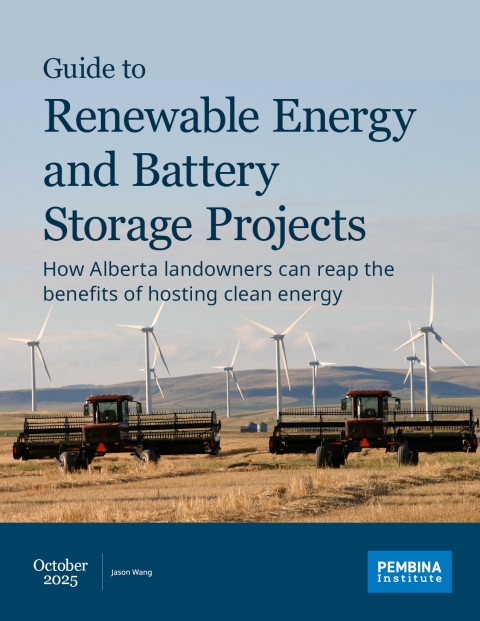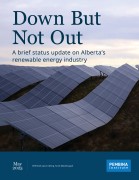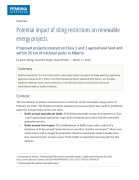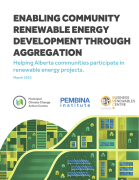In less than a decade, renewable energy has brought substantial financial benefits to Alberta landowners and communities, while also generating affordable energy for the province's electrical grid. Given that renewables generate the lowest-cost form of new energy available, new project proposals are sure to continue to arise. But when landowners and communities are first approached by wind and solar developers as potential hosts for a renewable energy project, it naturally generates a lot of questions.
Our new publication, Guide to Renewable Energy and Battery Storage Projects: How Alberta landowners can reap the benefits of hosting clean energy, takes care of a lot of the research and homework they would otherwise face. The guide starts by grounding readers with an explanation of what renewable energy is and how the industry has evolved in Alberta in recent years. It outlines the benefits of wind and solar projects, and the potential impacts.
It then outlines the steps involved in developing a renewable energy project, including:
how a suitable site is located,
how landowners and communities are engaged,
how project approval is obtained,
reaching an agreement with the landowner,
constructing the project,
operating the project, and
reclaiming the site when the lease ends.
There’s also a section for communities and how they can get involved in renewable energy development. Last year, Alberta municipalities collected $54 million in municipal tax revenues from renewables developers, so there’s good reason to welcome projects to their jurisdictions. But of course, municipalities want to ensure projects take their concerns into account, too, when they’re sited and built.
The guide covers potential avenues for communities to optimize involvement, including:
community energy projects,
establishing competitive zones for renewable energy,
Indigenous partnerships, and
innovative agricultural and urban solutions.
Another helpful feature of the guide is the lists of questions found in the appendices. These lists offer solid starting points for conversations with developers, including:
Opening questions to ask developers about the project (location of project, impacts, proposed lease and payment terms, neighbour consultations, past experience, etc.)
Questions on long lease agreements (project duration, compensation and reclamation)
Altogether, the guide, developed with funding from the Alberta Real Estate Foundation, provides a solid basis for a successful partnership between landowners, communities and wind and solar project developers.








